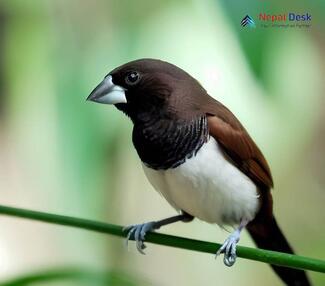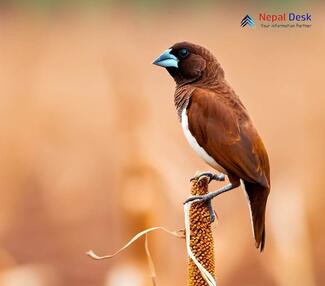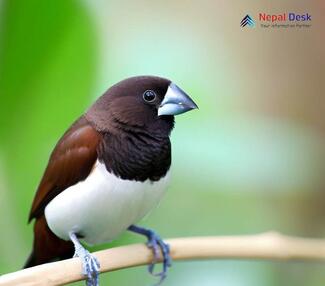Home to an incredible array of biodiversity, Nepal is a paradise for bird lovers, drawing them in with its vast collection of avian species. One particularly captivating bird is the White-rumped Munia (Lonchura striata), known for its distinctive appearance and habits. This petite, sociable creature has captured the hearts of casual birdwatchers and experienced ornithologists alike. In this article, we will delve into the enthralling aspects of the White-rumped Munia and spotlight its existence in Nepal.
Distinct Features
Originating from Asia, this tiny bird is about the size of a sparrow, measuring around 10 to 11 centimeters long. Its striking appearance comes from its combination of brown upper parts, black lower parts, and a signature white patch on its rump. The endearing creature also has a sturdy conical beak that enables it to consume seeds with ease.
Natural Habitat and Range
These birds favor open grasslands, farmlands, brushy regions, and areas close to human settlements. Their distribution range spans numerous countries throughout South and Southeast Asia, including Bangladesh, India, Indonesia, Sri Lanka, Vietnam, Thailand, Nepal, and beyond.
Existence in Nepal
Nepal's varied topography provides an array of environments for the White-rumped Munia. The birds can be seen at elevations ranging from the Terai Plains up to 2,000 meters in the middle hills region. The Kathmandu Valley stands out as a key location for seeing these charming creatures. Though they mostly reside within their range year-round; seasonal altitude shifts have been noted in certain parts of Nepal where birds move to lower locations during winter months.
Dietary Patterns
The preferred diet for White-rumped Munias mainly consists of seeds from different grass species. During mating season, they might also consume insects like ants and termites for added protein to rear their young. They usually forage in groups, skillfully plucking seeds from grass stems or adeptly collecting fallen seeds from the ground.
Communal and Mating Behaviors
These birds are extremely gregarious, forming flocks of roughly 10 to 60 members. Breeding season typically runs from May through September, aligning with Nepal's monsoon period. They construct round nests out of grass, leaves, and fibers, cleverly concealing them among the foliage. Female White-rumped Munias can lay three to six eggs per clutch, and both parents take an active role in incubating the eggs and nurturing their young ones.
Conservation Status
Thankfully, the White-rumped Munia is classified as Least Concern by the International Union for Conservation of Nature (IUCN) due to its vast geographic range and stable population numbers. Nonetheless, it's vital that we continue keeping an eye on their population size and guard their natural habitats to ensure a thriving future for these enchanting birds.
In summary, the White-rumped Munia is not only an intriguing species to research but also a delight to observe within its Nepalese homeland. Their extraordinary appearance and captivating social behaviors make them a noteworthy addition to Nepal's colorful birdlife. For devoted bird enthusiasts and nature lovers in general, a trip to Nepal wouldn't be complete without witnessing the charming presence of the White-rumped Munia.




